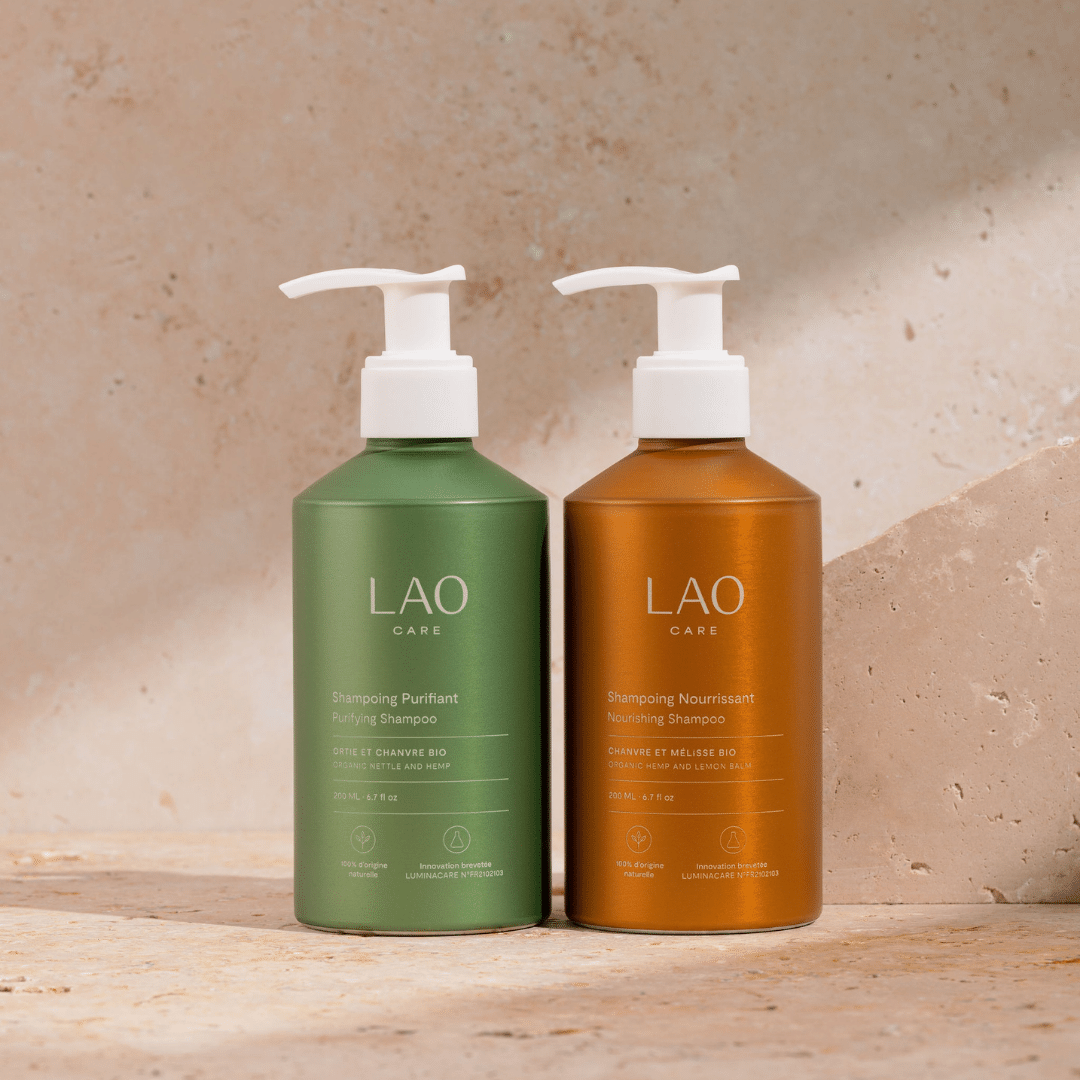In the current trend towards products that are better for our health and the environment, silicone , and in particular its use in hair cosmetics , is at the heart of all the debates. We know less about its cousin "quaternium" or "quats" which has the same effects.
Why are these substances increasingly controversial , and what damage do they cause to our hair and the planet ? LAO explains everything in this new article.
Why are silicones found in hair products?
Let's start with a little bit of information on the science and structure of hair . The outer layer of hair is composed of a substance called cysteine . On virgin hair (which has not yet been exposed to irritating products), a fatty acid, 18-MEA, attaches to the cysteine and this combination gives the outer layer of hair hydrophobicity (does not like water and tends to repel it).
The purpose of this layer is to regulate the entry of water into the hair in order to avoid swelling linked to too much water being absorbed.
During chemical treatments or repeated exposure to heating appliances, the bond between 18-MEA and cysteine is broken . When the 18-MEA layer is lost, the hair becomes hydrophilic (water-loving) and the cuticles are exposed to further damage.
The goal of hair products is to impart a certain level of hydrophobicity that can prevent moisture loss from the hair, control moisture absorption, and protect the hair from further frictional damage.
Silicone has proven to be an alternative to this need for the hair care industry. However, as we will see, silicones are more likely to damage hair.
How do silicones actually work?
Silicones are positively charged, while the hair itself has a net negative charge. When damaged, the bond between 18-MEA and cysteine is broken and cysteic acid forms on the surface, the hair becomes even more negatively charged.
The long polymer chains that make up silicone create multiple points of contact with the hair and bond to the hair through ionic interactions: the positive areas of the polymer attract each other to the negative areas of the hair. In doing so, they help smooth the surface of the cuticles by filling in the gaps in the hair.
Two families of silicones
There are two types of silicones , the smaller ones which are water soluble, and the larger ones which do not wash out with water.
Non-soluble silicones
When you use hair products containing non-water-soluble silicones , they "stick" to the surface of your hair and create a film around it. This film makes your hair appear healthy and shiny. You'll find it easier to detangle, it feels fuller, and it'll produce less static.
However, under this layer of silicone residue, your hair feels suffocated and dried out, as silicones are very hydrophobic. Not only do these silicones not wash out with water, but they also prevent the penetration of water, air, and nutrients essential to healthy hair. Hair thus becomes dry and brittle without you even noticing.
As you shampoo, condition, and condition your hair , the tiny residues left behind in your hair build up, leaving your hair feeling and looking greasy and weighed down . To address this, some people shampoo their hair more frequently, which creates more mechanical damage and strips the hair of its natural oils.
Silicones are very polluting ; they are poured into sewers and then end up in nature. They are not biodegradable and can take several centuries to disappear completely.
Some non-soluble silicones commonly found in hair products:
- Dimethicone
- Cyclomethicone
- Amodimethicone
- Pheryl Trimethicone
- Cetearyl Methicone
- Dimethiconol
- Stearyl dimethicone
- Ingredients ending in "-cone"
- Amodimethicone
Water-soluble silicones
These silicones wash out easily with mild shampoos and leave less buildup on the hair . While these silicones may seem less impactful, they are still environmentally polluting substances and will further damage dry, damaged hair .
In this family we find:
- Dimethicone Copolyol
- Lauryl Methicone Copolyol
- Any silicone with PEG as a prefix
Beware of hair products guaranteed to be “silicone-free”:
The Quaterniums
Less well-known among consumers, quaterniums have the same effect on hair as silicones. They act like a glue that temporarily improves the appearance of hair. The name is different, but the film-forming effect is exactly the same.
They are found on ingredient lists under the name quaternium-n or polyquaternium-n. (n being a number)
Quats, like silicones, are not biodegradable , and their very manufacture is polluting.
Hair products you think are safe and silicone-free may contain substitutes that work in exactly the same way, designed to reassure and deceive consumers. Double-check the products you use!
How to remove silicones from your hair?
If you want to stop using products containing silicone or quaterniums, you will first need to remove any residue still present in your hair.
To do this, there are several natural methods, we will present two of them to you:
Apple Cider Vinegar Rinse
Apple cider vinegar is a great ally for your hair ! It's rich in vitamins, which promote hair growth and reduce hair loss. Its pH, similar to that of hair, helps close the scales of the hair shaft and facilitate detangling. Your hair will be protected from external aggressions and will regain its natural shine. People prone to dandruff will also see their amount significantly reduced.
How is it applied to our hair ?
Performing a vinegar rinse:
Mix 5 tablespoons of vinegar with 10 tablespoons of cold mineral water in a bottle
Apply the mixture to your hair after your conditioner every 3/4 shampoos
Massage your scalp and lengths
No need to rinse, the smell will fade!
Clarification with baking soda
Baking soda will help deeply cleanse and purify your hair . You can clarify your hair if you want to stop using conventional hair products containing silicones, but also if your hair tends to get greasy quickly or is dull.
Carrying out a clarification with baking soda:
Add a teaspoon of baking soda to your shampoo dose once a month, or more often if you are in transition
Massage your scalp and lengths
Leave to stand for a few minutes
Since bicarbonate is very stripping for your hair, it is important to make a natural nourishing mask after your clarification.
You can rinse with vinegar to close the scales and prevent damage to the hair.
Natural alternatives
To repair damage caused by silicone-based products and nourish the hair shaft, consider using natural oils instead of silicone-containing conditioners and masks. We recommend castor oil or jojoba oil, which will nourish your hair.
Conclusion
As you've probably understood, if you've made it to the end of this article, we strongly recommend avoiding silicones and quaterniums if you want to maintain your hair in the long term. Don't panic if your hair feels greasy or drier during your transition to natural cosmetics; you can clarify or maintain your hair with apple cider vinegar!
Sources
-
https://cosmeticobs.com/fr/articles/ingredient-du-mois-10/les-silicones-84
Tuesday, September 7, 2010, CosmeticOBS (author's name not indicated) -
https://www.thehairfuel.com/silicones-in-hair-care-all-you-need-to-know/
April 1, 2019, The hair fuel (author's name not given) -
https://www.researchgate.net/publication/333324421_Comparison_of_Silicone_Quaternium_20_and_Polyquaternium_10_in_hair_care_formulation s
Anthony J. O'Lenick, July 2018






Leave a comment